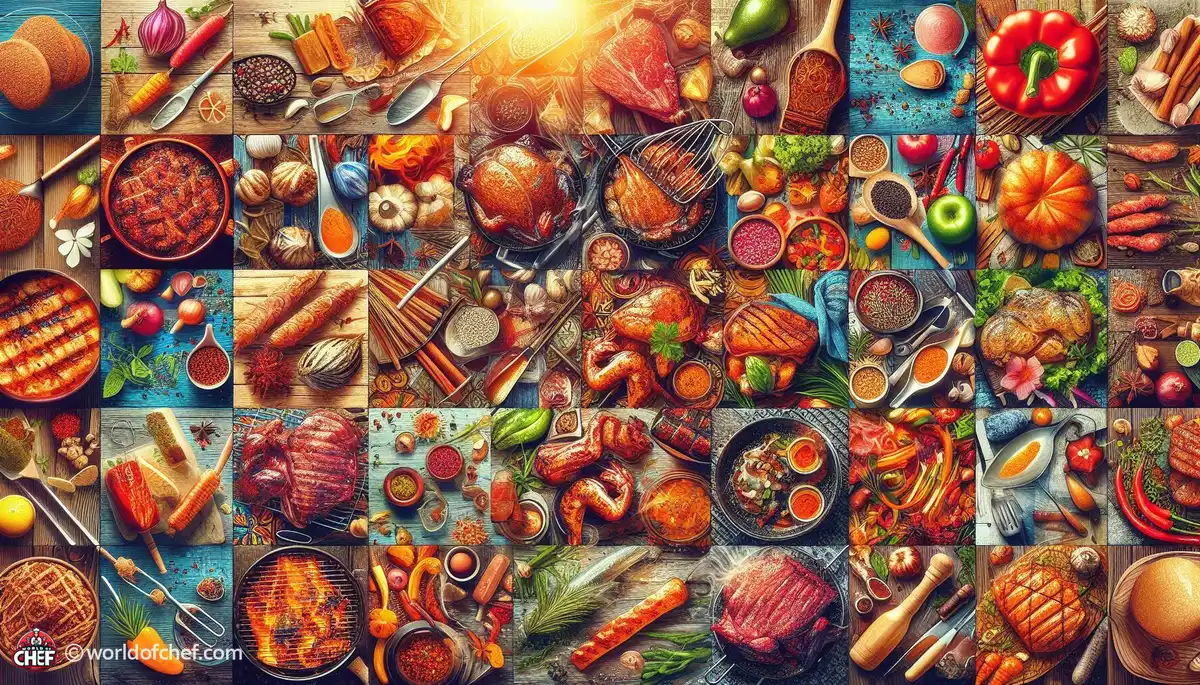
Simmering with Spices: Infusing Flavor into Your Dishes
Emery Donley - Oct 8, 2024 - 8 min read


Grilling is much more than a method of cooking; it is a social phenomenon that varies from region to region. Every region in the world has something special to offer when it comes to grilling: the ingredients, traditions, and climate. Let us embark on a culinary adventure to explore the varied methods of grilling perfected over different continents.
The Americas are replete with rich grilling traditions-from the smoky pits of Southern US barbecue to the street food stalls that light up the Latin American streets. In the Southern US, barbecue is an art of life, perfected over generations of pitmasters. Slow-cooked, low-heat cooking predominates here, often served with a good slathering of tangy, molasses-based sauces.
Asian grilling techniques are as varied as the continent, with each country putting its own spin on the most loved cooking method. Yakitori is the number one dish in Japan. The dish consists of chicken pieces grilled over hot charcoal, then seasoned with a sweet and savory glaze. In Korea, it is barbecue, which goes under the name bulgogi, thinly sliced beef marinated in a mixture of soy sauce, sugar, and sesame oil, before being grilled to perfection.
The Europeans always considered the art of grilling part of their culinary way. Italians indulge in grigliata di pesce-that is, grilled seafood-being their summertime favorite seafood. This dish consists only of olive oil, lemons, and herbs-seasoning the freshest of seafood. Greeks enjoy the skewered chunks of grilled marinated meat in street foods as souvlaki. Souvlaki would consist of grilled skewered pieces of meat served alongside pita bread and sauce.
As many people know, the quintessential heart of every tremendous grill session lies in the balance between heat and smoke, which is to be determined to get that mouth-watering char and smokiest flavor. To understand it, you should know exactly how these two elements collaborate to produce a perfect barbecue. Heat cooks the food, while smoke adds profundity and complexity to it. The various types of wood impart their own separate flavors, including hickory and mesquite along with cherry and apple, among others.
Marinating is an essential pre-prep step when preparing to grill meat, as flavors and moisture will be multiplied when cooking. Formulations are highly variable because people in different regions have preference differences, but most typically use acid, such as citrus or vinegar, plus oil, herbs, spices, and aromatics, for the marinade. It is best to keep meat in the marinade for at least a few hours or overnight so flavors will penetrate deeply, then bite into tender and juicy bites.
Resting meat after grilling is one of the most overlooked steps in this entire process, yet all the difference it makes will be in the final product. Letting grilled meat sit for a few minutes before slicing or serving permits juices to redistribute evenly for each bite to be juicy and full of flavor. Larger cuts of meat, especially steaks or roasts, require this step before slicing to prevent juices from escaping.
Charcoal grilling is the darling of purists, for it gives off intense heat and smoky flavor. A charcoal grill does take more time and effort to get the hang of, for the temperature control is trickier than with a gas grill. But many aficionados will swear that charcoal cannot be beat for its unmatched flavor, which is why the extra effort is well worth it.
Gas grills are very convenient and consistent. So, it appeals to any beginner or expert griller. By simply turning a knob, you control the heat. Precise cooking temperatures can be set. Though gas grills do not have that smoky flavor of charcoal, they compensate that with convenience and ease of use. It is thus ideal for weeknight meals or a large family get-together.
Charcoal versus gas grilling has been at the forefront of this kitchen for decades, with extremely passionate advocates on both sides of the aisle. Bottom line, the choice all comes down to personal preference and cooking style. People swear by the ritual, the flavor, of charcoal grilling, and they appreciate the convenience and the consistency of gas. More importantly, though, to get out there and grill!
Grilling is not just cooking but culture, tradition, and a celebration of flavors. Now, by discovering global grilling techniques, one can take outdoor grilling to the next level and bring the flavor of the world to one's backyard. Whether you like your brisket smoked over pits in Texas or a snack from a Tokyo street food vendor grilled on its stick, the possibilities for outdoor grilling are vast and open. So gather in some friends and family and cook your way through international destinations. Happy grilling!

Emery Donley - Oct 8, 2024 - 8 min read

Russell Comeaux - Oct 8, 2024 - 8 min read

Walter Backus - Oct 7, 2024 - 8 min read

Samantha Thames - Oct 7, 2024 - 6 min read